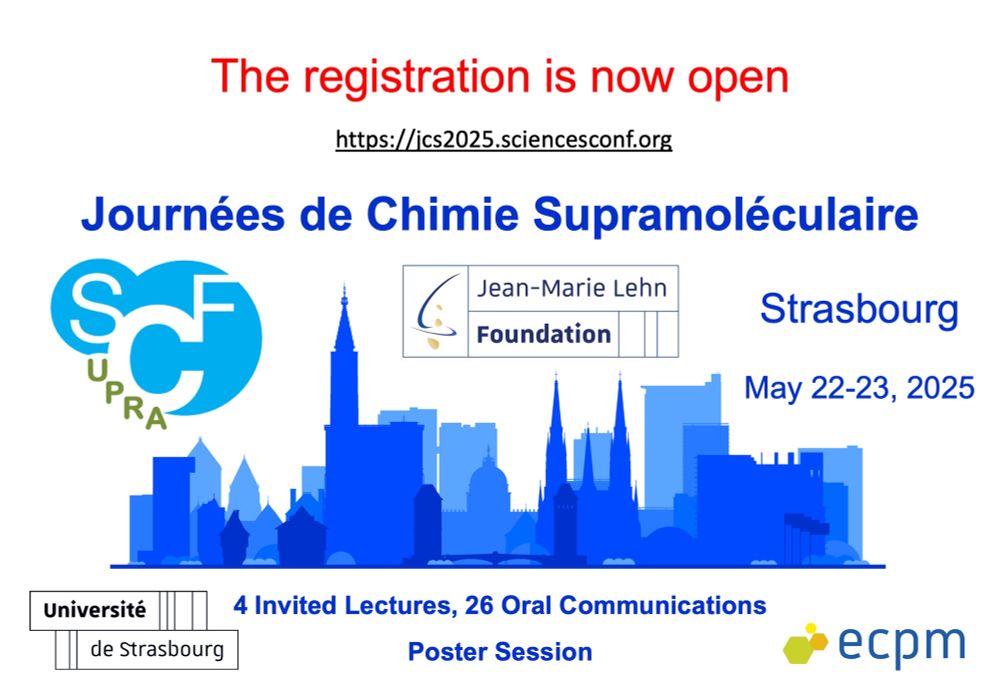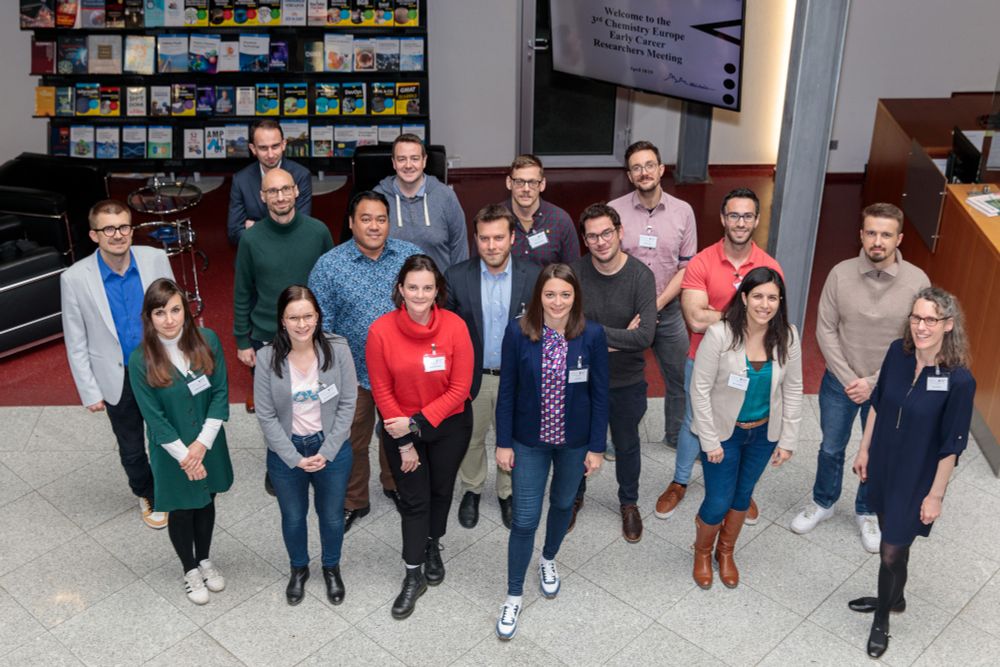Thanks!
08.12.2025 12:46 — 👍 0 🔁 0 💬 0 📌 0Giulio Ragazzon
@giuliosflask.bsky.social
Here mostly a chemist. Interested in endergonic processes and other cool stuff. Group leader at the University of Strasbourg.
@giuliosflask.bsky.social
Here mostly a chemist. Interested in endergonic processes and other cool stuff. Group leader at the University of Strasbourg.
Thanks!
08.12.2025 12:46 — 👍 0 🔁 0 💬 0 📌 0It works even in buffer, so we feel like it's a step in the right direction for integration into biological environments.
The first work of @saniyahaya.bsky.social PhD, with guidance from @shuntaroamano.bsky.social cial, now out #OpenAcces in @angewandtechemie.bsky.social
Interested in active transport, taxis, or light-driven systems?
Our latest work may catch your curiosity: shorturl.at/ApOse
A structurally simple molecule can transport multiple anions against their concetration gradiend (a form of phototaxis).
👇
Shoutout to Kaiyuan, Federico, & Shaymaa (not on bsky), as well as a big thank you to our collaborators (@stefanborsley.bsky.social, @epenocchio.bsky.social, @claudiabonfio.bsky.social), and Job's team!
05.06.2025 16:19 — 👍 2 🔁 0 💬 0 📌 0I believe these works are also a nice example of how focusing on network properties (and specifically ratchet mechanisms, the principles underlying molecular machines) enables rather complex tasks using very simple molecules.
05.06.2025 16:19 — 👍 1 🔁 0 💬 1 📌 0A bit that I particularly like of our work: we did the key experiments guided by theory, which helped us to find conditions where small differences were amplified, and even revealed nonlinearities.
05.06.2025 16:19 — 👍 2 🔁 0 💬 1 📌 0The two works have the same root, but then explore different aspects: Boekhoven and coworkers realized selective transport, while we focused on kinetic aspects which enable pumping in the presence of a chemical fuel on either side of the barrier.
05.06.2025 16:19 — 👍 0 🔁 0 💬 1 📌 0Long story short, the works were treated largely independently: we found constructive editors and reviewers, but the randomness of peer review also appeared. For us it was a bit faster, so we waited to share the work more broadly, ideally returning the big favor they did initially by waiting for us.
05.06.2025 16:19 — 👍 0 🔁 0 💬 1 📌 0So, we coordinated: they were incredibly kind [thanks!🙌] to wait for us to write the manuscript and few [very intense] weeks later we uploaded to ChemRxiv both works, submitting then to the same peer reviewed journal.
05.06.2025 16:19 — 👍 1 🔁 0 💬 1 📌 0They had decided to write the work and had the manuscript basically ready, while we were still attempting transport through lipid membranes.
05.06.2025 16:19 — 👍 0 🔁 0 💬 1 📌 0Job & his team were incredibly open in discussing their findings. We had both achieved the key milestones, and both teams attempted transport through lipid membranes with little success.
05.06.2025 16:19 — 👍 0 🔁 0 💬 1 📌 0..first thing he mention upon arrival : they were also working on active transport! 😱
05.06.2025 16:19 — 👍 0 🔁 0 💬 1 📌 0Last fall I was invited by @boekhovenlab.bsky.social at TUM for a PhD defense: we had been using "their" carbodiimides to achieve active transport and was looking forward to discussing the systems with him, so I anticipated the topic shortly before arriving..
05.06.2025 16:19 — 👍 1 🔁 0 💬 1 📌 0Pumping molecules against a gradient without a pump?
Back-to-back with @boekhovenlab.bsky.social, we describe minimal systems that use chemical energy to transport molecules against a concentration gradient.
It started with a little shock!🧵
Us: shorturl.at/smQNF
Job's team: shorturl.at/zftps

Les inscriptions aux “Journées de Chimie Supramoléculaire” JCS2025 sont maintenant ouvertes (gratuit mais obligatoire pour les étudiants, doctorants et post-doctorants) jcs2025.sciencesconf.org
09.02.2025 10:24 — 👍 27 🔁 19 💬 0 📌 1👋Our department at the Technical University of Denmark is looking for an assistant/associate professor in *any* chemical discipline! 🧪🇩🇰
Check it out and feel free to get in touch 💬
👇
efzu.fa.em2.oraclecloud.com/hcmUI/Candid...
Peng-Lai, @stefanborsley.bsky.social, Martin & our collaborators Alessandro and @giusepponelab.bsky.social demonstrate how a catalyst transduces chemical energy to perform mechanical work in www.nature.com/articles/s41... in @nature.com. tinyurl.com/jny7nen5. Animation @scicommstudios.bsky.social😀
15.01.2025 16:08 — 👍 101 🔁 36 💬 7 📌 5
If you've ever read about molecular motors, you've probably wondered about "power strokes." We looked into that by simulating a catalysis-driven molecular motor explicitly 🧐
I am super happy to share my latest work with Alex, Geyao, and Todd @nuchemistry.bsky.social
pubs.acs.org/doi/10.1021/...
Thank you @andrewbissette.bsky.social you for handling the manuscript smoothly and for arranging this Preview!
27.11.2024 20:51 — 👍 12 🔁 0 💬 0 📌 0
Check out starter packs in #ChemSky to find people quickly: blueskydirectory.com/starter-pack... there's a bunch of good ones.
21.11.2024 16:59 — 👍 5 🔁 1 💬 1 📌 0
We are pleased to have 14 young European scientists visit us for the 3rd Chemistry Europe Early Career Researchers Meeting
19.04.2024 09:24 — 👍 4 🔁 1 💬 0 📌 0